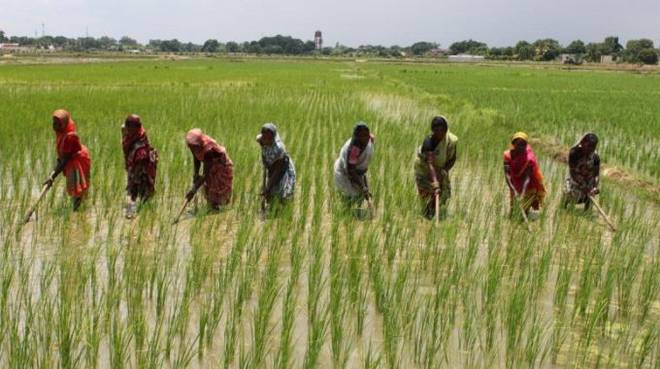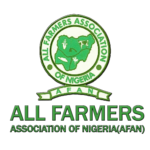While debating the impact of the federal government’s border closure policy (and the recent reopening) on commodity prices, I found myself wondering yet again about agricultural risks and Nigeria’s Agricultural Insurance sector. I had earlier on, in the October of 2020 written about this subject in an article titled Floods: Another Precarious Year for Nigerian Farmers, which touched on Agricultural insurance particularly weather-based Index insurance. Another form of innovative insurance product is Area Yield Index Insurance, which I would discuss in this piece. However, just how do we currently deal with agricultural risks in Nigeria?
In terms of production, the agricultural sector in Nigeria is beleaguered by many risks ranging from price risk caused by potential volatility in prices to production risks resulting from uncertainty about the levels of production that primary producers can achieve. The nature of agricultural risks is one that can be detected across the entire agricultural value chain not only at levels of farmers as primary producers. Each stakeholder along the supply chain, from the farm input suppliers, financial institutions, distributors and traders, governments, processors and the consumers face their respective degrees of risk. Agricultural investments are also among the riskiest economic ventures to be embarked upon, with the absolute dependence on unpredictable weather conditions making income from crop products and agricultural products like livestock, poultry and dairy to be very unstable. The primary producers or farmers are usually the most exposed to these risks, and suffer most from the consequences.
Insurance of agricultural produce indemnifies farmers for possible losses suffered resulting from damages to their products and also provides funds for servicing such loans while underwriting guarantees prices for the eventual farm produce in order to assure farmers of adequate and stable income. In 1977, The Agricultural Credit Guarantee Scheme Fund (ACGSF) was created to provide succour to banks that lend to farmers under the programme. The Nigerian model of credit guarantee scheme is targeted, funded and direct. It guarantees credit facilities extended to farmers up to 75 per cent of the amount in default net of security realised. Innovations to the scheme by the Central Bank of Nigeria included Self-Help Group Linkage Banking, the Trust Fund Model and the Interest Drawback without any significant results. At the same time, many experts argue that with Nigeria Agricultural Credit Insurance Corporation’s (NAIC) incursion to general insurance, the focus was lost and the vast majority of farmers as well as agribusinesses are still totally excluded from any form of insurance and credit guarantee.
Along came the Nigeria Incentive-Based Risk Sharing System for Agricultural Lending (NIRSAL) in 2013, established in collaboration with the Federal Ministry of Agriculture and Rural Development (FMARD) and Nigerian Bankers’ Committee. While NIRSAL’s mandate is to stimulate the flow of affordable finance and investments into the agricultural sector, insurance is one of its five strategic pillars. With all these institutions and their ambitious plans and budgets, agricultural risks remain a daunting impediment to agricultural prosperity. For instance, despite the incentives, technical assistance and rating of institutions like NIRSAL, Private sector companies still find it difficult to compete with the Nigerian Agriculture Insurance Company (NAIC), which also receives premium subsidies and has a majority government clientele.
The lack of agricultural insurance products, particularly for small-scale and emergent farmers is further affected by the lack of a process for verifying claims at a granular regional level (e.g. Local Government Area) coupled with a lack of and an inadequacy in historical data, particularly for crop yield data. There is also a lack of pro-active aggregators (relative to other countries in Africa like Kenya and South Africa) who would be willing to distribute insurance products and potentially provide financial (e.g. premium pre-financing) and non-financial (e.g. enrolling farmers).
Many would wonder why implementing these traditional insurance products is difficult not only in Nigeria but in many developing countries. Experts have identified many issues like adverse selection and moral hazard where there is a tendency for higher risk farmers to insure under voluntary participation and the scenario under multi-peril crop insurance, where farmers may accentuate claims through neglect or manipulation of yields. Research has also pointed to high underwriting costs and high loss assessment cost as an impediment to proper implementation of insurance projects. Smallholder farmers for instance are just not worth the cost of gathering individual data to establish insurance policies coupled with the assessment of simultaneous losses at the individual farmer level.
I am of the opinion that it will take greater innovation in managing agricultural risks beyond traditional insurance to rescue the situation. This is why I am an ardent advocate for Index Insurance. Area yield index insurance for instance pays indemnities not based on farm-level yield shortfalls but on realisations of an index that is highly correlated with farm-level yield shortfalls. It pays based on estimates of the area yield. A threshold is established that is less than the expected county yield (e.g., 80 per cent of the expected country yield). Indemnities are paid whenever the realised area average yield (e.g., county average yield) is less than the threshold. Products like these can cut down the factors causing significant drawbacks in traditional insurance like underwriting and assessment costs, moral hazards and even enrolment. We must explore proven alternatives in insuring agriculture, especially because traditional insurance has simply never worked for Nigerian farmers and agribusinesses.

 Join Daily Trust WhatsApp Community For Quick Access To News and Happenings Around You.
Join Daily Trust WhatsApp Community For Quick Access To News and Happenings Around You.

